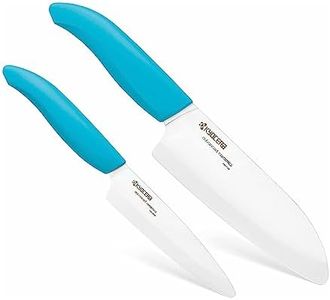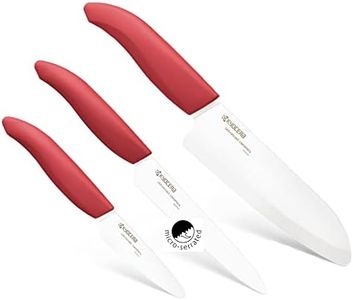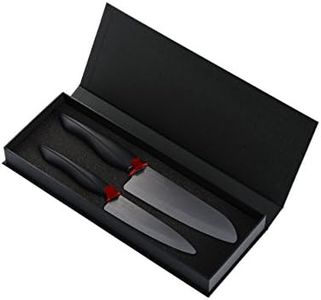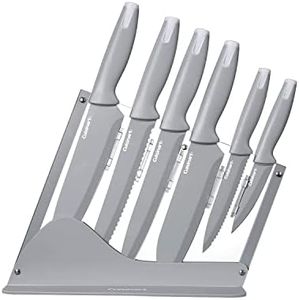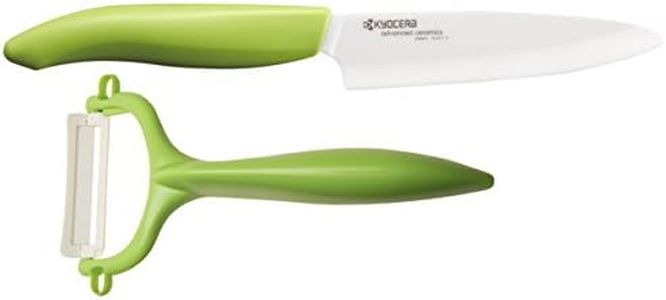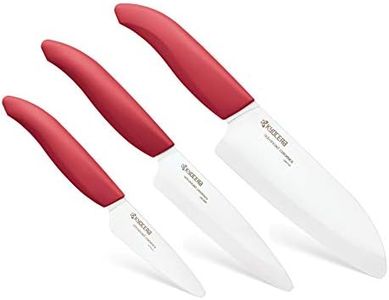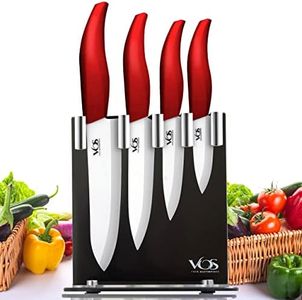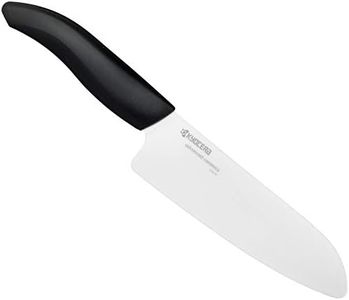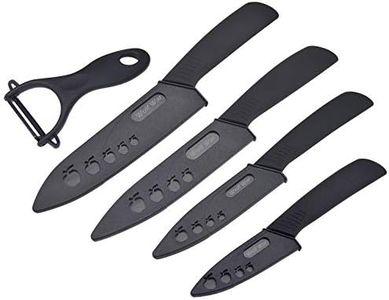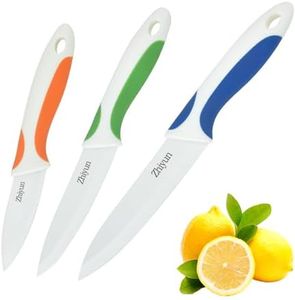We Use CookiesWe use cookies to enhance the security, performance,
functionality and for analytical and promotional activities. By continuing to browse this site you
are agreeing to our privacy policy
10 Best Ceramic Knives
From leading brands and best sellers available on the web.Buying Guide for the Best Ceramic Knives
Choosing the right ceramic knife means looking beyond just its stylish appearance. Ceramic knives are well-known for their sharpness, lightweight feel, and resistance to rust. However, they aren’t right for every kitchen or task, so it’s important to understand the key specifications. Thinking about how and how often you’ll use the knife—whether for slicing fruits and vegetables or heavier duties—will help you choose the best fit for your needs.Blade MaterialWhile all ceramic knives are made from ceramic materials, the quality and purity can vary. High-quality ceramic is often made from zirconia (zirconium oxide), resulting in a harder and sharper blade that lasts longer between sharpenings. Lower-grade ceramic may mean the knife dulls more quickly or is more prone to chipping. If you plan to use the knife frequently and want to rely on it for precision, look for a knife made from high-purity zirconia. For occasional use, any ceramic option may suffice.
Blade LengthThe length of the blade influences what tasks the knife is best for. Shorter blades (under 5 inches) provide more control and are ideal for intricate tasks, like slicing fruit or garnishing. Mid-length blades (5-7 inches) are versatile for everyday kitchen use, such as chopping vegetables or cutting boneless meat. Longer blades (over 7 inches) handle bigger produce or more extensive prep, but may be less maneuverable. Choose a length based on the size of food you commonly prepare and your comfort using a larger blade.
Handle Design and MaterialA comfortable handle improves grip and control, especially since ceramic knives are lightweight. Handles come in different shapes and are made from materials like plastic, rubber, or composite. Some offer textured or ergonomic designs for a steadier, slip-resistant grip. If you expect to work with wet ingredients or value safety, focus on knives with non-slip or ergonomic handles. For shorter tasks, a basic handle may be sufficient.
Weight and BalanceCeramic knives are generally lighter than steel ones, which can reduce hand fatigue during repeated slicing. However, too light a knife can feel flimsy or harder to control. The balance between the blade and handle affects how natural the knife feels in your hand. If you often chop for a long time, look for a knife with a well-balanced feel and enough weight to guide your cuts smoothly. For quick, occasional use, the overall weight may not be as critical.
Blade ThicknessThinner blades are designed for making fine, precise cuts but are also more fragile and can chip easily if used on hard foods or bones. Thicker blades tend to be sturdier and might withstand misuse a bit better, though they’re less suited to delicate slicing. If your main tasks involve soft fruits and vegetables, a thin blade offers best performance. For more varied use, including slightly harder ingredients, a medium-thick blade provides a compromise between sharpness and durability.
Edge Retention and SharpeningCeramic blades maintain their sharp edge far longer than steel, meaning less frequent sharpening. However, sharpening ceramic requires special diamond tools, and not every home kitchen has these. Consider how much you value long-term sharpness and whether you'll send the knife out for professional sharpening or invest in a compatible sharpener. If you don’t want to deal with sharpening at all, look for a brand or model with a reputation for especially long-lasting edges.
